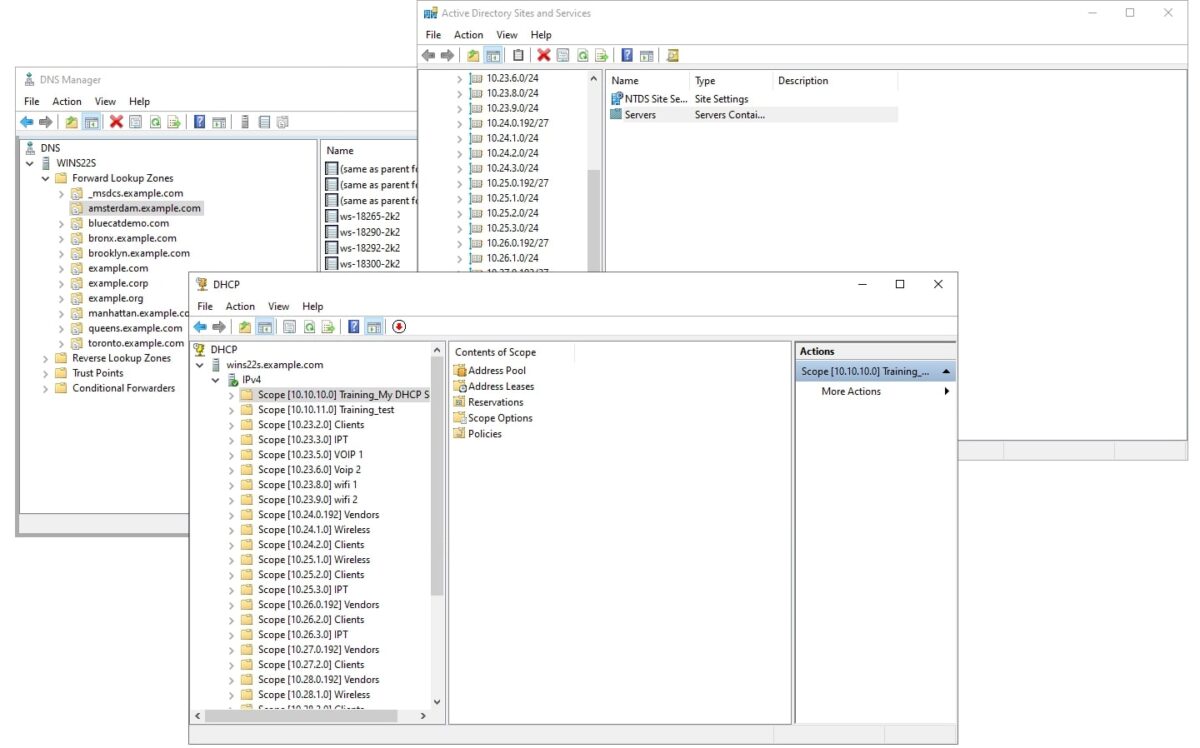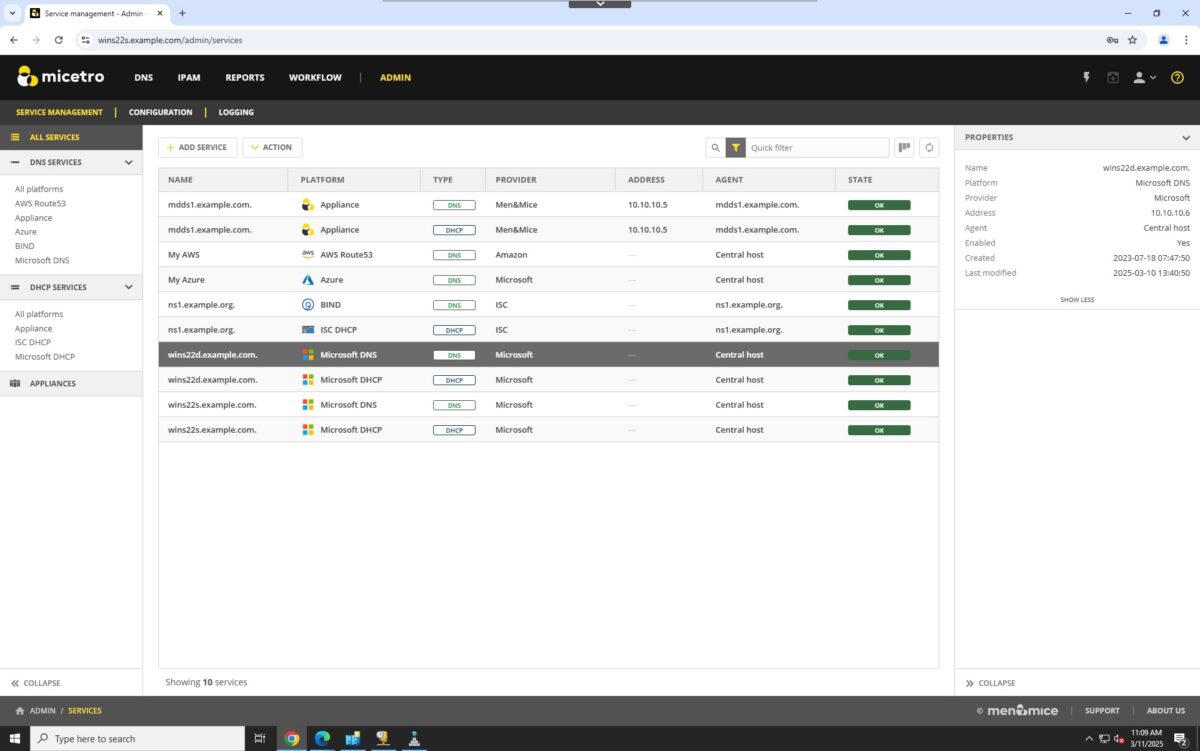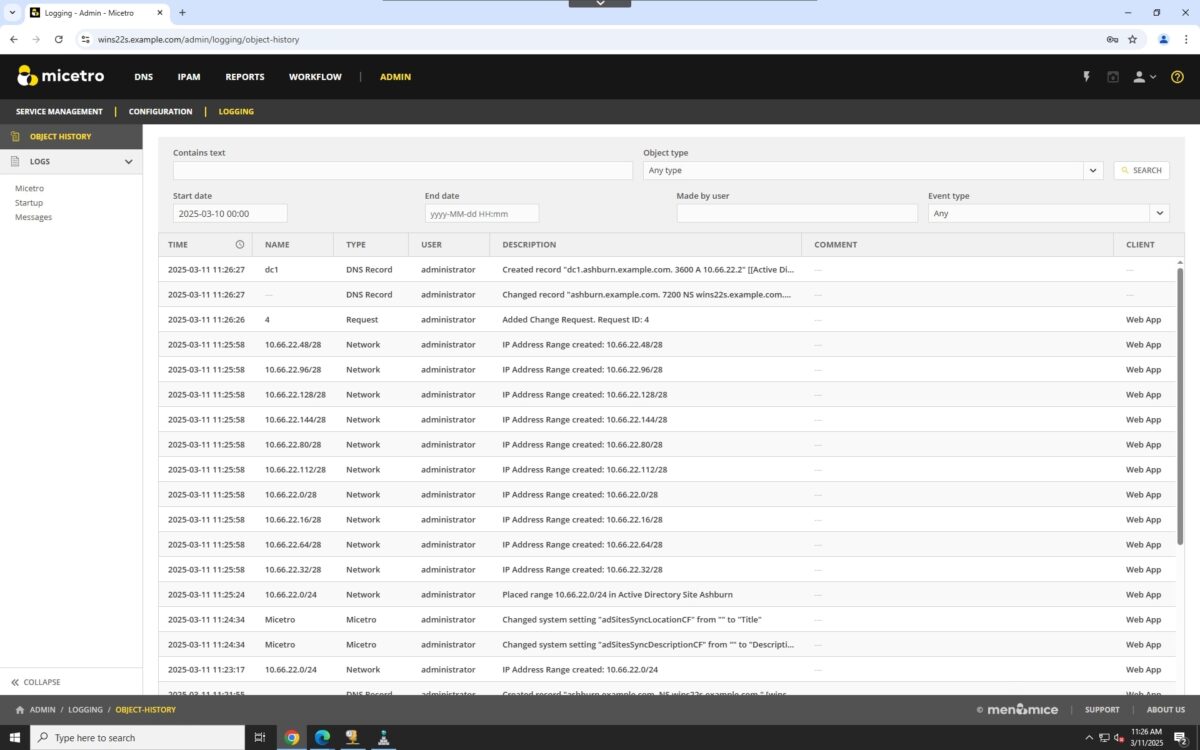Simplify Microsoft DNS, DHCP, and Active Directory with Micetro
Learn how Micetro makes it easy to administer Microsoft DNS, DHCP, and Active Directory sites and subnets and manage your DDI environment.

Microsoft DNS, DHCP, and Active Directory sites and subnets are the backbone of your networks. They ensure devices communicate seamlessly and services remain accessible.
Yet, in native Microsoft environments, managing these critical components can quickly become time-consuming and error-prone—especially as networks grow and hybrid environments become the norm.
With BlueCat Micetro, a management overlay that orchestrates your existing Microsoft DNS, DHCP, and IP address management (together known as DDI) tools, you can streamline operations and transform the visibility and scalability of your DDI environment.
In this post, we’ll first explore some of the key challenges of managing Microsoft DNS, DHCP, and Active Directory sites and subnets. Next, we’ll offer a demo of how Micetro helps you simplify the administration of these tools. Finally, we’ll delve into the benefits you can get from managing your Microsoft DDI environment with Micetro.
The challenges managing Microsoft DNS, DHCP, and Active Directory
Below are some of the top challenges that come with managing Microsoft DNS, DHCP, and Active Directory sites and subnets:
Fragmented tools
Administrators often rely on separate Microsoft Management Consoles (MMCs) for managing DNS, DHCP, and Active Directory sites and their associated subnets, making getting a unified network view difficult. This fragmentation increases the complexity of tasks and the likelihood of human error, especially as networks scale to multiple sites.

Permissions
Managing permissions across different MMCs for DNS, DHCP, and Active Directory can quickly become challenging. With different permissions assigned in different tools, and no comprehensive visibility across the DDI environment, it can be difficult to restrict IT team members to the fewest privileges needed to perform their duties.
Lack of centralized visibility
Understanding how DNS zones, DHCP scopes, and Active Directory subnets interact becomes a manual, tedious process without a single pane of glass. This lack of visibility can lead to misconfigurations and network downtime.
Operational inefficiency
Routine tasks like updating DNS records, modifying DHCP scopes, or adding Active Directory subnets require multiple steps across different tools, slowing down IT operations. Furthermore, troubleshooting and rolling back changes becomes extremely difficult with different audit logs for each.
Scaling challenges
As network size and complexity grow, the limitations of native tools become apparent. Indeed, managing hundreds or thousands of DNS records and DHCP leases manually across multiple sites and servers is neither sustainable nor scalable.
Limited automation and oversight
Native Microsoft tools lack robust automation and audit logging, making it harder to enforce consistency and accountability across your environment.
How Micetro simplifies Microsoft administration
Micetro transforms how IT administrators manage Microsoft DNS, DHCP, and Active Directory sites and subnets. It provides a centralized platform for streamlined operations, enhanced visibility, and improved scalability.
Our demo below shows you how Micetro imports Microsoft DNS and DHCP servers and Active Directory sites and services subnets. Furthermore, our demo shows how easily these critical services can be managed.
With Micetro overlaying your Microsoft environment, management becomes unified, scalable, and accountable.
Benefits of managing your Microsoft DDI environment with Micetro
Let’s break down the benefits you’ll see by implementing Micetro to manage your Microsoft DDI environment.
Seamless data import
Micetro makes it easy to bring your Microsoft environment under centralized management. Through an intuitive integration process, administrators can quickly connect Microsoft DNS and DHCP servers—as well as Active Directory sites and subnets—to the platform. Within minutes, Micetro ingests data such as:
- DNS zones and records
- DHCP scopes, active leases, and reservations
- Active Directory sites and subnets
By unifying this data, Micetro eliminates the need for juggling multiple consoles and provides a comprehensive view of your network.
Unified management interface
Once data is imported, administrators can manage DNS and DHCP configurations from a single, user-friendly interface. Key tasks such as modifying DNS records, adjusting DHCP scope ranges, and reserving IP addresses are streamlined, reducing time spent on routine operations. Integrating IP address management further enhances oversight, clearly showing how IP resources are allocated across the network.

Enhanced visibility and control
Micetro’s centralized view empowers IT teams to see the relationships between DNS, DHCP, and Active Directory sites. As a result, this visibility helps prevent misconfigurations, ensures network stability, and enables proactive management of network resources.
Scalability for growing networks
Whether you’re managing a small enterprise network or a sprawling global infrastructure, Micetro scales effortlessly to meet your needs. Its robust architecture supports hybrid environments, making it an ideal solution for organizations with a mix of Microsoft and non-Microsoft systems.
Role-based access control
Micetro includes powerful role-based access control (RBAC) features. Micetro’s RBAC features allow organizations to enforce the principle of least privilege and ensure users only have access to the resources they need.
Audit logging and accountability
Micetro tracks every action performed within the platform, ensuring full accountability and simplifying compliance reporting. Furthermore, it helps troubleshoot issues by providing a clear history of changes, with automated rollback if something goes wrong.

With Micetro, transform your network management
Managing Microsoft DNS, DHCP, and active directory sites and subnets in a native environment can be daunting, but it doesn’t have to be. BlueCat Micetro empowers IT administrators to take control of their network infrastructure, simplifying operations, reducing errors, and enabling scalability. With unified management, enhanced visibility, and robust tools, Micetro is the ultimate solution for modern DDI management.
Ready to see Microsoft’s DNS, DHCP, and Active Directory management in action? Contact us today to schedule a personalized demo and see how it can transform your network management experience.





